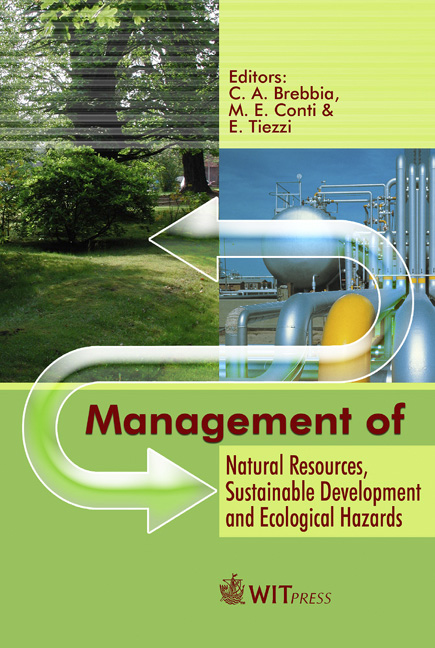Predicting The Intensity Of Wind-blown Removal Of Dust And Sand In The Turkmenistan Desert
Price
Free (open access)
Transaction
Volume
99
Pages
7
Published
2006
Size
693 kb
Paper DOI
10.2495/RAV060721
Copyright
WIT Press
Author(s)
V. Kostiukovsky & A. Arnageldyev
Abstract
Wind plays a major part in the dynamics of solid non-organic material in the deserts of Turkmenistan. The main direction of movement of sand and dust in this region, due to atmospheric transference, is from north to south. Data from the literature and the results of field investigations testify that the majority of wind-blown material comes from desert dunes without vegetation (combined area 37,000 km2) - more than 29 billion tons per year. Material blown from sandy desert terrain anchored by vegetation (206,000 km2) amounts to 16.5 billion ton/year. Nine hundred and sixty million ton/year comes from the saline plains (20,000 km2), where the surface is crumbly due to intensive geo-chemical processes, and 352 million ton/year from stony rubble surfaces (45 km2). Consequently, nearly 50 billion ton/year of sand and dust are implicated in windblown solid particle removal in the deserts of Turkmenistan. The influence of human activity in the deserts during the 20th century came close to being catastrophic. More than 60% of the territory of Turkmenistan (200,000 km2) is currently undergoing desertification. More and more dust and sand is blown from overgrazed pastures, roads, arable fields, settlements, etc. The major sources of the blown sand, dust and salts are the exposed beds of the Aral Sea and other water bodies that are drying up after extraction of their water for irrigation (nearly 45,000 km2). Natural warming of the climate is intensified by the hotbed effect, in which increased human activity has led to an increase in average annual air temperatures by 6-9 °C and an abatement of precipitation by 50%. The result may be expansion of desertification to 90% of the deserts of Turkmenistan, and an increase in the quantity of wind-blown sand and dust to 65 billion ton/year by 2050. Keywords: wind-blown transportation, soil types, Turkmenistan Desert, desertification, solid substrate.
Keywords
wind-blown transportation, soil types, Turkmenistan Desert, desertification, solid substrate.





